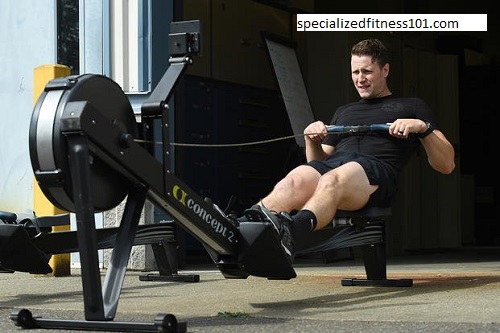Comprehensive Guide to The Special Forces Fitness Test:
Special Forces This SFFT is an extremely grueling test that puts candidates to a rigorous physical and mental evaluation to determine if they have the caliber to join the high echelons of the military. It measures more than what it takes to be physically strong and enduring; it tests mental strength and determination to perform above par. In this article, we will explore the different components of the SFFT, the rationale behind it, preparation tips, and what makes the test challenging for contestants.

Understanding the Special Forces Fitness Test:
Special Forces:
The SFFT is a multi-faceted test designed to evaluate various physical characteristics, including strength, endurance, agility, and overall fitness. Most tests have several major components that will give an indication of their field tasks. The requirements, which might differ according to country and unit, remain based on the same principles.
Key Components of the SFFT:
Special Forces:
Push-Ups:
This exercise tests the candidate’s upper body strength and endurance. Candidates have to do as many push-ups as they can in two minutes, wherein proper form when done right prevents injury and maximizes the engagement of the muscles involved.
Sit-Ups:
These test the level of strength and endurance in the core exactly like push-ups. Candidates are asked to do a determined number of sit-ups within two minutes, meaning that core stability is fundamentally crucial for a multitude of physical functions.
Pull-Ups:
This exercise tests the strength of the upper body, mainly the back and arms. Candidates are mostly asked to perform a certain number of pull-ups, which indicates their ability to carry and lift heavy loads.
2-Mile Run
: The running exercise will be an indicator of the cardiovascular endurance of the candidate, as well as the overall fitness. Candidates will have to complete 2 miles in a certain time within their age group and gender. It is expected to simulate the need for movement over long distances often encountered in an operational scenario.
Obstacle Course:
This test doesn’t only test agility and speed but also coordination with the further challenge of forcing the participant to pass an obstacle course filled with various impediments such as walls, ropes, and tunnels. Hence, it simulates an operating environment’s unpredictability.
In addition, participants are typically taken through a pre-scheduled ruck march while carrying rucksacks that have equipment. The section of the test is meant to check endurance and capability in the carrying of heavy gears over long distances. In practical matters, for instance, a Special Forces operative is mandated to perform the same roles in operations.
While physical toughness is paramount, however, psychological toughness is equally as important to anyone wishing to find success in SFFT. Applicants must be able to demonstrate their ability to stand the test of weariness, hardship and discomfort. Ultimately, it is often mental toughness that separates successful applicants from those who do not make it.

Role of SFFT:
Special Forces:
The SFFT has three critical functions:
Selection Criteria:
The test acts as a filter to select individuals who possess the physical and mental resources needed for SFFT. Thus, only the best get to be assessed.
Team Cohesion:
The arduous SFFT nature fosters team harmony among its trainees. Straining beyond one’s limits to develop profound bonds among people is one of the success factors within teamwork under extreme conditions.
Training Feedback:
Feedback results of SFFT help the candidates identify where they are strong and where they need improvement. Therefore, based on this knowledge, such trainees can adjust their programs to eliminate any weaknesses while bringing out an improvement in general performance.
Operational Readiness: Essentially, the SFFT equips candidates with the actual physical demands of a real-life mission. Such candidates who pass this test tend to perform better in real life.
Preparations for the SFFT:
Preparations for the SFFT involve a systematic regimen of training focused on building up strength, endurance, and agility. Here are some effective strategies to maximize performance:
1. Training Plan
It is essential to have a training plan in place. A well-structured training program must have the following elements:
Strength Training: Include exercises that work your upper body as well as your lower body squats, deadlifts, bench presses, and rows.
Endurance Training: Long-distance runs are supplemented with interval training to maximize cardiovascular fitness. Consider adding ruck marching with a weighted pack to simulate the real-world operating environment.
Core Workouts: Include exercises such as planks, leg raises, and medicine ball twists to increase core strength, which many tasks rely upon.
2. Practice Test Components
Understand the specific components of the SFFT. The tactical athlete will continually train in push-ups, sit-ups, pull-ups, and the 2-mile run to increase their endurance as well as ensure proper technique. Use a local obstacle course to enhance agility and coordination.
3. Incorporate Functional Training
Functional training utilizes movements that replicate the things people do in life. Such exercises would be termed kettlebell swings, tire flips, as well as agility drills, all of which build overall fitness and prepare candidates for some of the diverse challenges they may face.
4. Recovery in Priority
Sometimes, recovery is overlooked in training. Rest, hydration, and nutrition will impact performance if they are not optimized. Schedule a rest day within the training plan and ensure adequate sleep for the body to recover and rebuild.
5. Cultivate Psychological Resilience
Mental resilience can be cultivated with practices like visualization and mindfulness and through exposure to challenging conditions. The simulated exposure to high-stress environments during training can prepare candidates for the psychological strains of the SFFT.
Challenges Facing Candidates:
Special Forces:
Candidates for the SFFT undergo numerous and extremely grueling tests that test their physical and psychological limits to the extreme.
The physical testing of the test is very intense. In that respect, candidates are likely to be physically exha Thus, candidates must prepare and develop stamina and energy to handle the hassle they may face during the testing process. With proper preparation, candidates are likely to develop endurance and have a greater opportunity to succeed.

Competition:
The battle for this small number of posts is fierce, with thousands vying to get into a handful of slots. This makes it difficult for candidates to keep stress to minimal levels because there is an increased pressure to perform better.
Time Constraint:
Each part of SFFT has time barriers, making the students strike a delicate balance between speed and technique. As a result, the pressure of performing well will add up.
Unpredictability:
The obstacle course and ruck march might contain a few unknowns to test the candidates’ adaptability and problem-solving skills in thinking on their feet and adjusting strategies as necessary.

